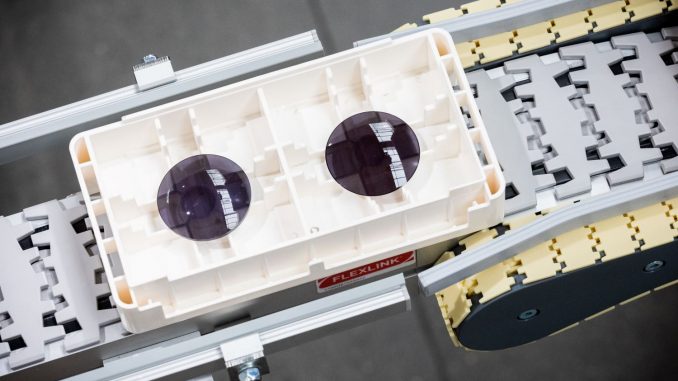
Traditionally characterized by slow but steady growth, the optical industry has been one of the most affected by the pandemic, but it already shows strong signs of recovery. Like many other industries, the last two years have seen an explosion of e-commerce and an increasing focus on the issue of sustainability. For companies and optical labs, investing in efficiency and quality is essential, as is the adoption of increasingly smarter production methods, with a focus on corporate responsibility and environmental policies.
The background: a need for growth held back by the pandemic
If we exclude the last two years of downturn caused by COVID-19, in the last two decades the optical and eyewear industry has been growing slowly but steadily. The main reason is a growth in issues such as short and near-sightedness that, while mainly affecting the older demographics, in the last few years are growing in younger people as well. This is due to the time spent in front of PCs and smartphones, leading to the growing need for eye correction.
Currently, the eyewear market is valued at USD 129 billion. The market can be divided into three main sectors: spectacles (70%), sunglasses (14%), and contact lenses and solutions (16%).
After a decline of over 14% in 2020 due to the global pandemic wiping off USD 20.6 billion in global sales, the eyewear industry is already showing signs of a bounce-back in 2021, with global sales up 5% compared to 2020 (1).
Spectacles, sunglasses and lenses: one industry with different market principles
Spectacles are the main source of revenue for eyewear globally and in 2021 they have seen a market recovery, after the 2020 lockdowns that hit optical store sales. Currently, the demand for spectacles is driven by somewhat normal activity resuming at optical retailers as restrictions are lifted in various parts of the world. The growth of e-commerce is also driving the recovery of this sector.
On the other hand, contact lenses have managed to cushion the blow of the pandemic in all regions. Thanks to their wider distribution via e-commerce, they are set to reach pre-pandemic sales levels by 2023. Reasons are rising disposable income in Asia and increased hygiene concerns. Furthermore, hybrid working arrangements in Europe and North America are propelling sales of daily disposable lenses.
Finally, the sunglasses sector, despite more dynamic growth rates than other categories, is projected to recover its pre-COVID-19 sales levels only by 2025. This is due to the fact that this category was the most severely hit due to sunglasses’ more discretionary nature and international travel restrictions further impacting demand.

The geographical distribution of the market: the prevalence of North America and a strong growth trend in Asia
Western Europe remains the second-largest eyewear region in terms of sales. However, it is closely followed by the Asian Pacific Region, which is set to overtake Europe in 2022 and North America by 2026. The demand in Asia is largely driven by China, which sees growing demand for spectacles and contact lenses. The soaring myopia rates are caused by the large amount of time children and adolescents spend in front of a screen. This has led to a premiumization growing demand in spectacles and contact lenses, e.g. anti-blue ray products.
Industry focus: how to adapt to the changing market requirements
The producers of components for the optical industry will need to be increasingly fast in meeting the needs of an evolving market. For this reason, it is very important that both optical labs and optical companies automate in a functional way, to accommodate scalability for future growth or future changes in their facility.
The search for maximum efficiency translates into the need of lowering maintenance costs and daily operation times. In other words: making production processes increasingly more efficient. When possible also through efficient handling of optical trays, smart stacking and sorting, and product handling with robotics.
Customized solutions are key to the optical industry
The optical industry in particular benefits from individual customer solutions. It is important, to pick a partner with specialized industry knowledge working with innovative technologies specifically for improving lab performance and lowering costs. Solutions in the optical industry should be space-saving, easy to integrate, and silent.
For this reason, we focus on customized solutions to meet the needs of our optical clients. FlexLink boasts a long experience in the optical industry and offers a solution portfolio capable of adapting to the specific needs of the different customers. Our industry know-how, combined with our technologically advanced and modular solutions, allows us to effectively meet the challenges that the industry will have to face.
Our offer is wide and includes established technologies such as conveyors and cobots, as well as cutting-edge solutions such as our new and innovative OPTILAB X®™: the most flexible system for optical trail handling available on the market.
A technological focus will be devoted to OPTILAB X®™ and FlexLink’s other solutions for the optical industry very soon. Stay tuned for more! Also, read our other blogs about the optical industry here.
—-
(1) Source: Euromonitor International Ltd: World market for eyewear (November 2021)




Leave a Reply